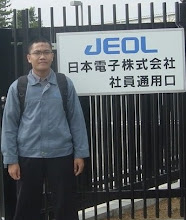Cahn-Hilliard phase decomposition can model such disparate phenomena as:
* Tin-Lead solder aging
* Void lattice formation in irradiated semiconductors
* Self-assembly of thin film patterns
Free Energy Formulation :
Cahn-Hilliard systems model material separation and interface evolution by racking flow driven by configurational and interfacial free energy minimization.

Cahn-Hilliard Equation :
Adding a material-dependent mobility coefficient defines the concentration flux.


Weak Cahn-Hilliard Equation :
Taking a weighted residual and integrating by parts twice,

Gives a functional defined on
 in case of constant Mc.
in case of constant Mc.Phase Separation :
* Random perturbations in initial conditions rapidly segregate into two distinct phases, divided by a labyrinth of sharp interfaces.
* Rapid anti-diffusionary process.

Spinodal Decomposition :
* Over long timescales, single-phase regions coalesce.
* Motion into curvature vector resembles surface tension.
* Patterning may occur when additional stress, surface tropisms are applied.

3D Phase Separation :
* Qualitatively similar.
* Topologically very different.
* Much more computationally intensive.
 Thin Film Patterning :
Thin Film Patterning :* Electrostatic or chemical surface treatment attracts one material component preferentially.
* A spatially varying bias is added to the configurational free energy.
Effects of Bias Strength :
Low surface potential energy biases are overwhelmed by random noise.
 Higher surface potential energy biases form patterns with decreasing defect density
Higher surface potential energy biases form patterns with decreasing defect density
Source : www.cfdlab.ae.utexas.edu/~roystgnr/usnccm9.pdf

No comments:
Post a Comment
Hi All...
thanks for reading my post.
I would be glad if you give me a comment about this post